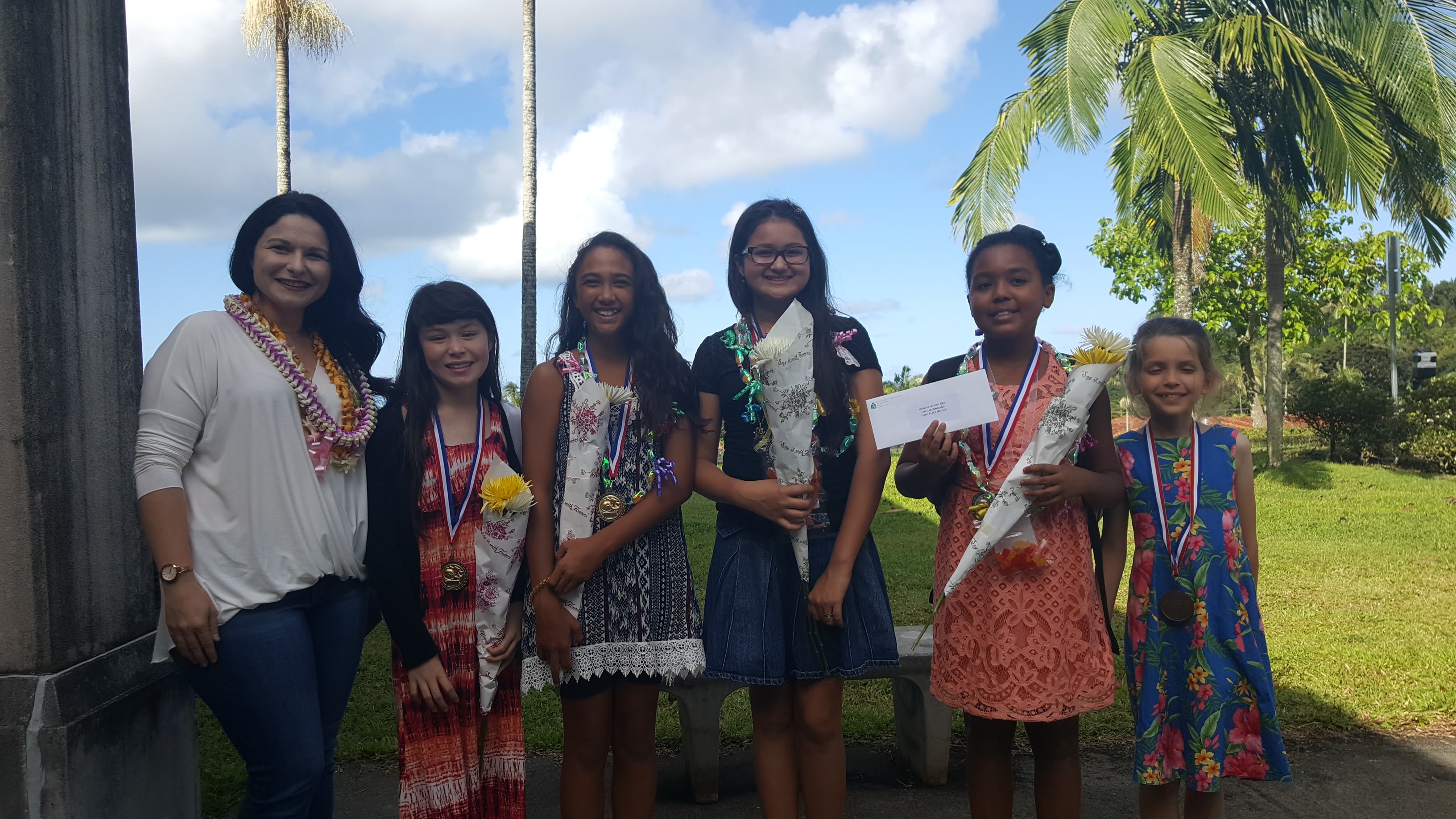Get to Know the 2017 History Teachers of the Year: Amy Diegel, Hawaii
Posted by Anna Khomina on Tuesday, 10/24/2017
This year, the Gilder Lehrman Institute recognized 52 State History Teachers of the Year for their tireless and innovative efforts to make history come alive for their students.
But who are they, really? We asked these talented teachers to answer a few questions about themselves and to reflect on the challenges and joys of teaching. We will feature a state winner every Tuesday and Thursday, so keep checking back to learn more about these outstanding educators!
This week, meet Amy Diegel:
 Amy Diegel, Mililani Waena Elementary School
Amy Diegel, Mililani Waena Elementary School
2017 Hawaii History Teacher of the Year
What is the last great history book you read?
A People’s History of the United States by Howard Zinn. History has always been written by the victors, and I appreciate how this book shows balance and gives credence to much-overlooked aspects of the people and events that have shaped this country. It forces the reader to consider a more encompassing view of not only history, but of life, which inspires me to teach my fourth and fifth grade National History Day students about balance in their own interpretations and analysis of history.
What is your favorite historical site or museum?
My favorite historical site is Pearl Harbor—specifically, the Arizona Memorial and the Battleship Missouri. It’s pretty incredible to be standing in the very place the United States joined World War II. The oil slick from the USS Arizona is visible on the surface of the harbor water and is enchantingly beautiful. The way it ebbs and flows is nothing short of balletic . . . but under such beauty lies something so somber and haunting. Standing in the memorial itself is to become entrenched in its history, and fills your heart so full of emotion, it comes out through your eyes by way of tears.
Who is your favorite historian?
Sarah Vowell—what wouldn’t I give to spend an afternoon with her. How cool it is to tell the students I teach that the voice of Violet in The Incredibles has made history funny and engaging for millions of adults! Somehow, it makes history cooler for them too.
 Do you have a favorite/funny memory from teaching?
Do you have a favorite/funny memory from teaching?
Teaching one of my students how to yell in the library at her teacher was one of my favorite and funniest memories of teaching. My student had researched Emmeline Pankhurst for her National History Day project and was preparing a performance for the district competition. We held sessions in the library twice a week, so this became her rehearsal space. One adjective she used to describe Emmeline Pankhurst was "militant"—well, if you are going to be militant about something, you need to be vocal and passionate in what you say and how you act. I told her she had to yell as if she was at a rally at Hyde Park and needed to convince others of her convictions. So for the next half hour, we both screamed rally cries at the top of our lungs in the library. At the district competition, she made the judges jump out of their seats due to her sheer volume.
What is your favorite historical film or series?
I likenGlory, directed by Edward Zwick. The soundtrack makes it seem like it’s real ghosts singing through the orchestral arrangement, demanding that their stories be told. It was about so much more than war, and highlights parts of history that others have made small.
Do your students have a favorite historical topic or era?
Because I teach drama to elementary school students, I try to align my lessons with what they are learning in their classrooms or topics that I think they would find fascinating. One lesson my students enjoy is on Shakespeare and Elizabethan England. Students pick cards when entering the classroom and depending on the number, they get assigned to be the royalty, the gentry, the yeoman, or the peasants. They get pretty into their roles. Royalty gets certain perks during the lesson, like eating popcorn in class and sitting on thrones, but come to realize that they are only able to stay in power with the support of the other three groups.
Another favorite lesson is on the Stamp Act and other events that led to the Revolutionary War. Students get to have candy ("Yay!"), but are "taxed" heavily and have it steadily taken away ("Not fair!"). Through their increasing disappointment and watching their candy stashes dwindle, they develop empathy with the colonists and their plight. We use those experiences to make a more emotionally accurate tableau vivant to show and act out the events leading up to the Revolutionary War.